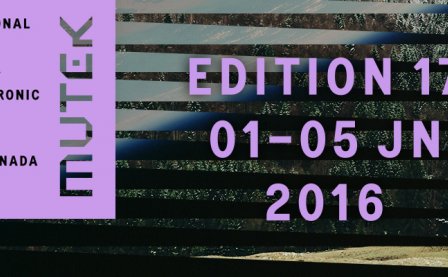Midi is a language of musical communication unlike traditional methods of notation; it is the total and discrete command of a synthetic orchestra of voices whose phrases can be programmed into layers of automated loops to constitute something in the shape of a song. Sometimes Midi gets used to imitate acoustic music, like the cheesy demo numbers that show up on digital jazz notation programs. At the tips of the most esoteric fingers, the Midi format is an albeit narrow porthole through which to escape the strictures of traditional song structure. The Midi controller as instrument grants the player access to the manipulation of a whole new set of discrete sonic attributes; the texture, duration, repetition, aural-spatial position, and velocity of a particular sound are all infinitely tweak-able, within the bounds of chosen audio engine’s emulators.
Dawn of Midi don’t have anything to do with the technology described above, at least not on the surface. The three humans that comprise the Brooklyn-based group all play acoustic instruments — Aakaash Israni on standup bass, Qasim Naqvi on percussion, and Amino Belyamani on piano — with virtuosic precision verging on technocracy. Dysnomia is filled with the type of polyrhythmic fractals and mathematical sharpshooting that usually only results from beatmatching, Midi-syncing, and quantizing; the looming dread that sustains the record’s unfettered advance of tension is more anxiogenic for the fact that all its automatism was wrestled out of wood and steel contraptions by human hands.
Conceptually, the band has rendered a queer but inevitable inversion of influence on Dysnomia — they are playing acoustic music influenced structurally and tonally by automatic, electronic composition. Their foremost musical touchstones aren’t hard to place — Aphex Twin, Can, math-rock, minimalist composition — but it is the subtlety of their musicianship that makes Dawn of Midi a fascinating project to behold. You can hear through the course of Dysnomia’s patient, studied mutation an equal grasp of footwork’s dancefloor micro-phraseology and of jazz’s celebration of the musical voice, an impressive chimera of raw instrumentality and conceptual piousness that results in a terrifying and awesome balancing act: Dysnomia, with its dual acoustic warmth, its utter proximity to the listener, and its simultaneous refusal to reveal the evidence of a “human” composer behind the layers of hammering precision, compels because of how the whole thing could come unspooled at any instant, at the slip of a finger, or in a moment of passion — but it never does.
Instead, Dawn of Midi bridges the gap between anthropomorph and computer by refusing to dichotomize the two. This is human music for the 21st century, an electrifying and hyper-physical snapshot of the networked consciousness wrought by calloused, sweaty flesh. Dysnomia is about the entropy that worms its way out of the chain of automation, about how machines set in motion together make an assemblage uncannily human, about the glaring hole of blank space winking at the center of the network and the charges darting between the nodes.
If Dawn of Midi saw the portal open into a new sonic realm, their vision is one of dread, of unrelenting, monomaniacal repetition, where the notes played and rhythms banged out are never as important as the ones that the band ignores, refuses, and withholds from the listener. Dysnomia’s future is one where names and categorization lose their meaning, where signifiers tear themselves apart from their signified material and unhinge the lexicon of “meaning” into a stormy, swirling mass, a galaxy threatening to collapse into its own arbitrary gravity.
More about: Dawn of MIDI




